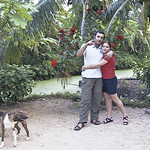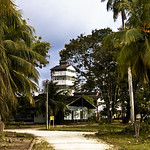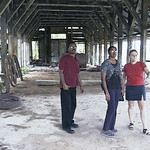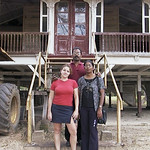Growth and decay
After the abolition of slavery and the loss of cheap labor, the plantations of Surinam soon became unattractive for exploitation. For a while, it was tried with people from China, India and Java, but to no effect. The cost was simply too high.
Taking the lead from the Portuguese, who brought the slave trade to Brazil, the English imported slaves into Suriname from the middle of the 17th century. The Africans survived the abominable conditions much better then the 'red slaves', the local indians, did. With this source of cheap labor, the sides of the Suriname river were cultivated. It would take another couple of years before the coast was also cultivated, due to the higher demand on labor by the clay-dominated ground.
When the Zeeuwen, from the southern coastal region of the Netherlands, won Suriname from the English in 1667, the English took their slaves with them to Tobago. It was the new Dutch governor who introduced polders (low lying ground, drained by milling stations), dikes and canals and started the exploitation of the rich coastal area.
Running a plantation was expensive and often very difficult and riddled with setbacks. Many of the plantation names remember this: Sorrow and hope, Good hope, Jacob's struggle, etc.
After a crash on the Amsterdam stock market in 1773, many plantation owners left for Holland, leaving their plantation in the hands of an overseer. More often than not, this overseer tried to maximize his short term profit by over-exploiting the soil and labor. As a result, in 1863, when slavery was abolished, already half of the plantations were no longer in use.
The new immigrants from Java, India and China who were paid contract workers couldn't change the tide. Although all were offered a trip back to their home country after completion of their contract, only few did go back. They came to Suriname mostly because their situation back home was bleak in the first place. The result was a multicultural Suriname.
Only few of the plantations are still (partially) working. Still, these are struggling to stay afloat. On the sites of the Peperpot and Marienburg plantations, people still do some work, although only a part of the Peperpot plantation is still slightly in use.











